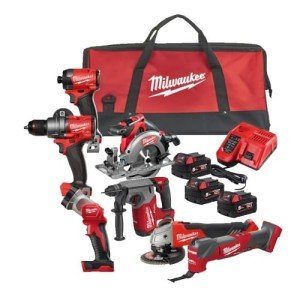What’s The Job Market For Build Your Own Tool Kit Professionals Like?
Build Your Own Tool Kit: A Comprehensive Guide
Structure your own tool kit is an important undertaking for any DIY enthusiast, property owner, or hobbyist. Having an efficient and comprehensive tool kit not only enables you to deal with different jobs efficiently but likewise saves you money and time in the long run. This guide will check out how to build your own tool kit, what tools to consist of, and answer some regularly asked questions.
Why Build Your Own Tool Kit?
Producing your own tool kit offers numerous benefits:
- Personalization: You can tailor your toolkit to meet your specific needs and tasks.
- Quality assurance: You can select the tools based on personal preference for quality and resilience.
- Cost Effectiveness: You can prevent buying unnecessary tools and focus on what you require.
- Knowing Experience: Building your own toolkit is an educational experience that enhances your understanding of your tools.
Important Tools for Your Tool Kit
Creating a tool kit can seem overwhelming, especially with the range of tools readily available. Below is a classified list of necessary tools, from hand tools to Power Tool Kit tools, to assist you get going:
| Category | Tools | Purpose |
|---|---|---|
| Hand Tools | Screwdrivers (various sizes) | Tightening and loosening screws |
| Hammers (claw and battery tool set rubber) | Driving and getting rid of nails | |
| Pliers (needle-nose, slip-joint) | Gripping, twisting, and cutting | |
| Wrenches (adjustable and socket) | Tightening or loosening bolts | |
| Tape Measure | Measuring length | |
| Cutting Tools | Energy Knife | Cutting different products |
| Handsaw | Cutting wood | |
| Power Tools | Cordless Drill | Drilling holes and driving screws |
| Circular Saw | Cutting large sheets of material | |
| Fasteners | Nails, Screws, and Anchors | Protecting materials |
| Wood Glue | Bonding wood pieces together | |
| Safety Gear | Shatterproof glass | Safeguarding eyes |
| Work Gloves | Safeguarding hands | |
| Ear Protection | Lowering sound exposure | |
| Organizational | Tool Box or Bag | Keeping tools arranged |
| Labeling Supplies | Easy recognition of tools |
Producing Your Tool Kit: Step-by-Step
-
Determine Your Needs: Determine what projects you prepare to undertake. Different tasks need different tools. For instance, if you’re primarily working with wood, focus on wood-cutting tools.
-
Spending plan Planning: Decide just how much you are prepared to invest in your tools. Buying quality tools is important, as they can last a lifetime.
-
Purchase Tools Gradually: Start with the most necessary tools and gradually include more specific tools as required.
-
Organization: Invest in a tough toolbox or Power Tool Bundle organizer. Keep frequently utilized tools quickly accessible while saving others safely.
-
Upkeep: Regularly clean and keep your tools to lengthen their lifespan and ensure they perform well.

Benefits of Different Tool Types
| Tool Type | Advantages | Disadvantages |
|---|---|---|
| Hand Tools | No need for electrical energy, portable, precise | Can be labor-intensive |
| Power Tools | Conserve effort and time, boost accuracy | Needs electricity, heavier |
| Cutting Tools | Flexible and effective for different materials | Needs correct handling and upkeep |
FAQ: Building Your Own Tool Kit
1. What is the minimum variety of tools I need to begin with?
A standard toolkit can start with simply 5-10 vital hand tools (e.g., a hammer, screwdrivers, pliers, a measuring tape, and an utility knife) depending upon your needs.
2. How do I choose the right tools?
Consider the types of projects you will undertake. Research study the tools used for those jobs and examine the quality and brand reliability.
3. Should I purchase new or utilized tools?
Both options have benefit. New tools typically include warranties, while utilized tools can be more cost-effective. Ensure utilized tools remain in good condition and functioning well.
4. How should I preserve my tools?
Keep them tidy, store them effectively, and examine frequently for any required repairs or replacements. Oiling and honing cutting tools will likewise boost their performance.
5. Can I create a tool kit on a budget plan?
Yes! Search for affordable tools, store throughout sales, or consider second-hand options. Focus on the most needed tools first.
Final Thoughts
Structure your own tool kit is not only a useful investment but also a satisfying experience that boosts your abilities. It makes it possible for people to handle projects with confidence and proficiency. By thoroughly picking a combination of hand tools, powered tools, cutting tools, security gear, and organizational materials, anybody can develop a customized tool kit that meets their special requirements.
With a well-rounded tool kit in hand, people can unlock their imagination and see their ideas come to life, project by project. Pleased building!

